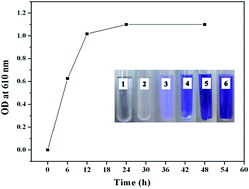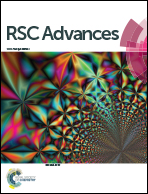Room temperature biosynthesis of crystalline TiO2 nanoparticles using Bacillus licheniformis and studies on the effect of calcination on phase structure and optical properties†
Abstract
Highly crystalline TiO2 nanoparticles were synthesised in one pot at room temperature using an extremophilic bacteria, Bacillus licheniformis. The organism produced an extracellular oxidase type of enzyme during the biosynthesis process. The biosynthesised TiO2 nanoparticles showed anatase phase structure. Further studies were carried out to understand the phase transformation properties of the nanoparticles by subjecting them to varying calcination temperatures. The morphology, structure and the crystalline phases of the titania nanoparticles were characterized using FTIR, XRD, and HRTEM. The characterization studies clearly indicated the phase transformation of the particles at different temperatures. The optical properties were studied using UV-Vis and Photoluminescence (PL) spectroscopy. The titania nanoparticles exhibited similar structural and optical properties when compared with chemically synthesised nanoparticles. Hence, this ecofriendly, less energy intensive, biosynthetic process may be used as an alternative to chemical approaches for the synthesis of TiO2 nanoparticles with similar structure, chemical and optical properties.


 Please wait while we load your content...
Please wait while we load your content...